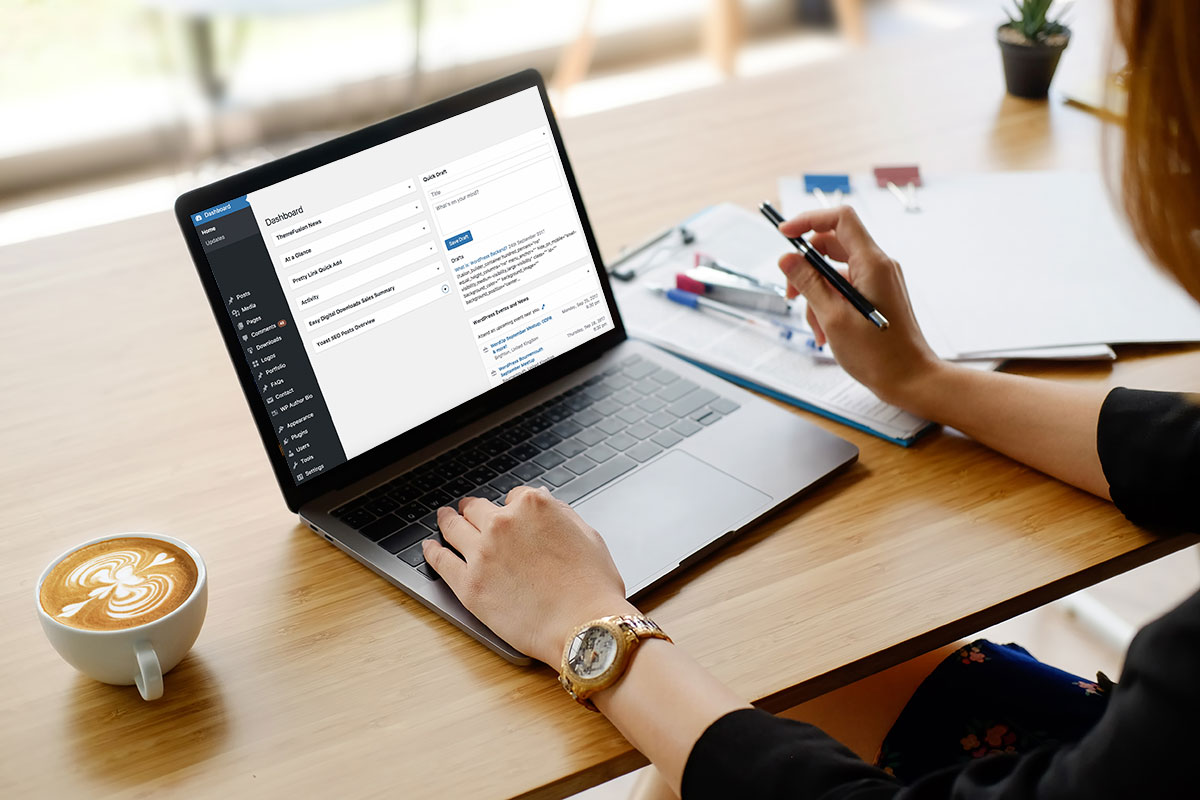

Wondering when to use an infographic? Infographics can make complex (and perhaps dry) information visually appealing. They are highly shareable on social media. Plus, if you’re seeking media coverage, sending an infographic alongside your media release can be the difference between a successful pitch and a ‘no thanks’ reply.
But infographics can be easy to get wrong. If you’re outsourcing to a Graphic designer, you want to make sure you maximise your investment. The key is to get the strategy of the infographic right before you begin. Your infographic plan doesn’t need to be exhaustive.
• what you want it to achieve (what does success look like)?
• how will you promote it to your audience (they won’t find it on their own)?
• how you want your audience to use it (share it, contact you or some other call to action)?
Infographics and survey reports are a match made in heaven. Infographics are great for hefty data. Science, health and research industries love infographics. If your audience is medical, academic government, finance or health experts, the reading can be dry. An infographic creates a visual that reinforces the data and makes it easily (and quickly) comprehensible. If you’re a marketer distilling complex data for media or consumers, an infographic can do the heavy lifting for your detailed research report. An excellent place to use infographics is in the Executive Summary of a text-heavy report.
Example 1 – Infographic showing breakdown of sugars from discretionary and non-discretionary/core foods. The target market were health professionals.
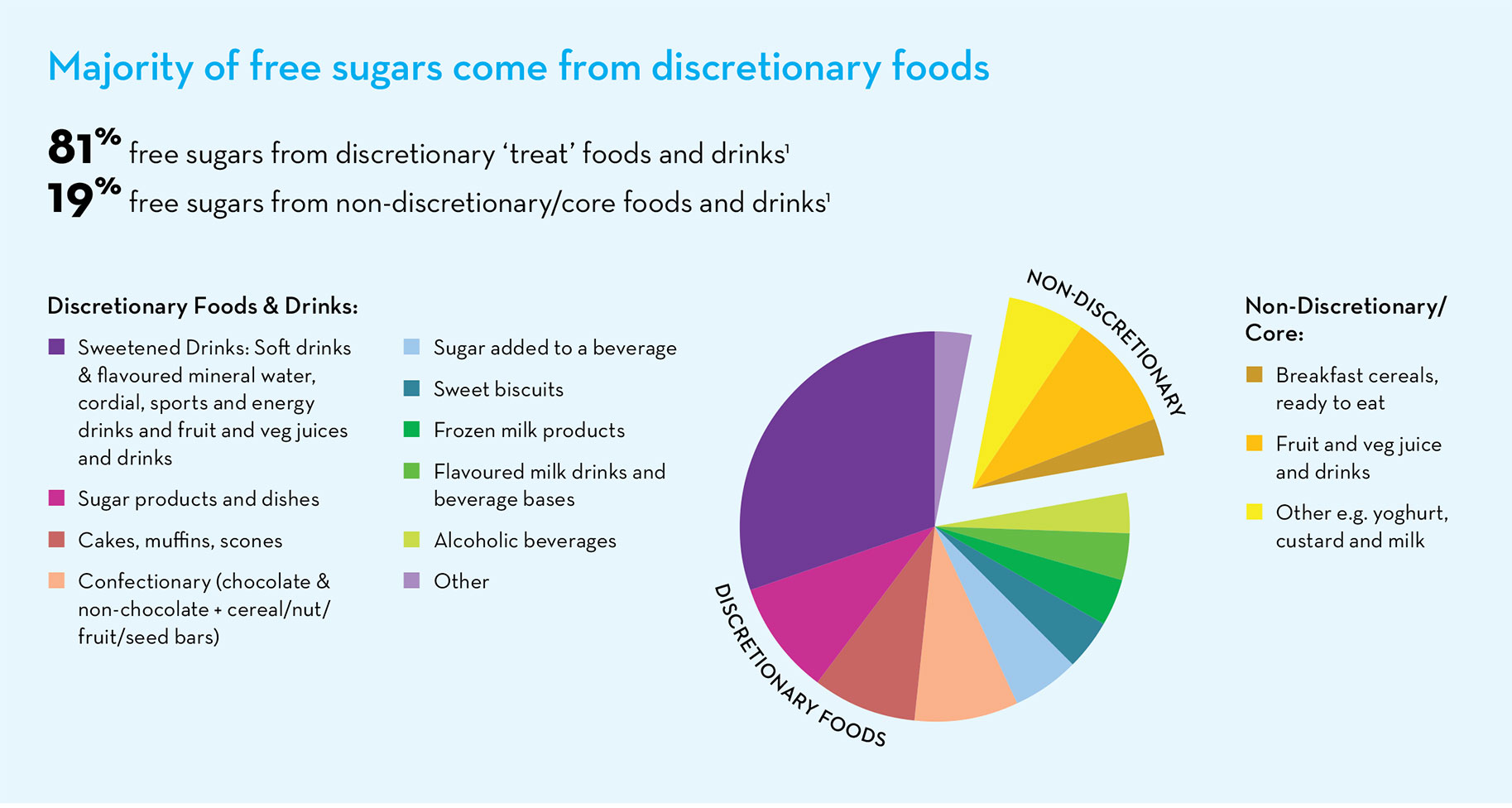
Example 2 – Infographic showing that what we drink changes as we get older. Along with highlighting the highest percentage points, the mountainous shapes followed the actual data, just like a simple line chart.
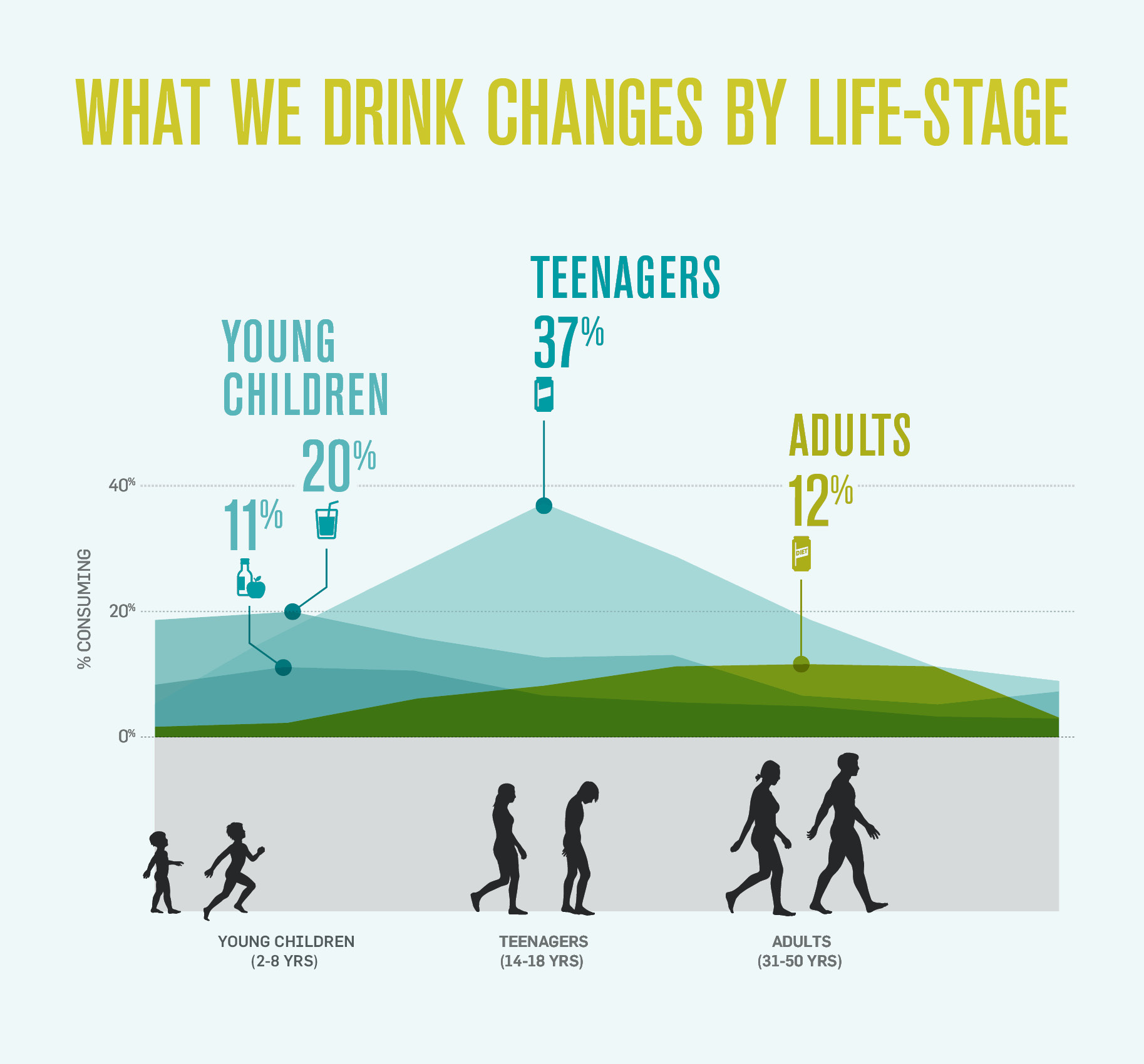
Whether you want to compare margarine to peanut butter, Backstreet Boys to NSYNC or investing in shares vs. investing in houses, infographics work extremely well. You can display the pros and cons of two opposites and let the audience make their conclusion (or you can use subtle or not-so-subtle cues to influence the outcome a little bit). Comparisons can make effective sales tools. Especially when you’re using infographics to show what your product has over the competition.
Example 1 – This comparison of Australian cooking habits uses quirky graphic elements to communicate its message. A written piece of text could tell the same story, but readers are more likely to remember that ‘convenience’ is the key factor when it comes to meal planning.
Example 2 – A straight-forward comparison showing Metro vs Regional searches on local council websites. The data is enlivened by a design that allows the reader to immediately understand where the major differences lie.
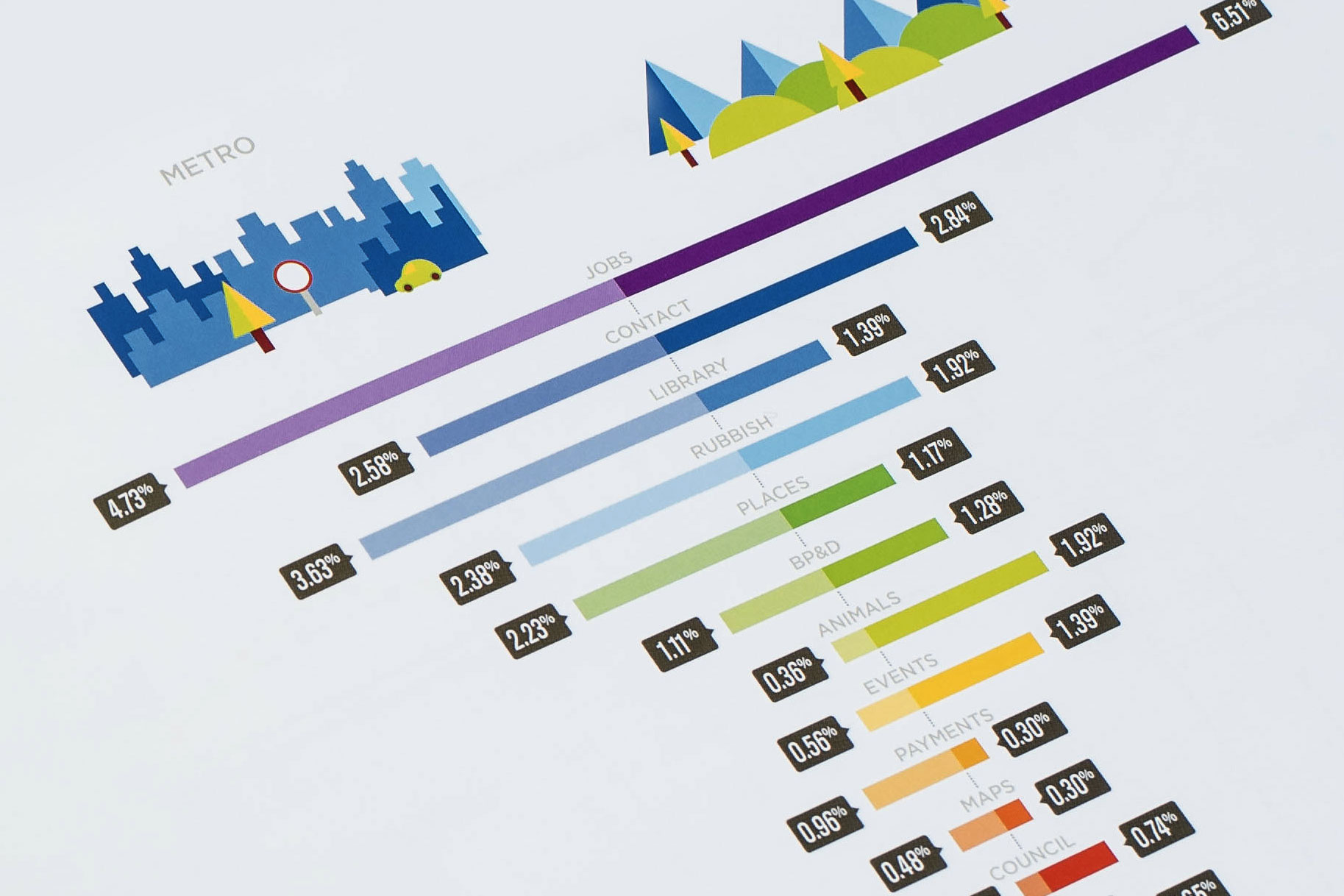
Example 3 – Aimed at Dietitians, this infographic uses survey data to compare the breakfast habits of Dietitians vs the general-population.
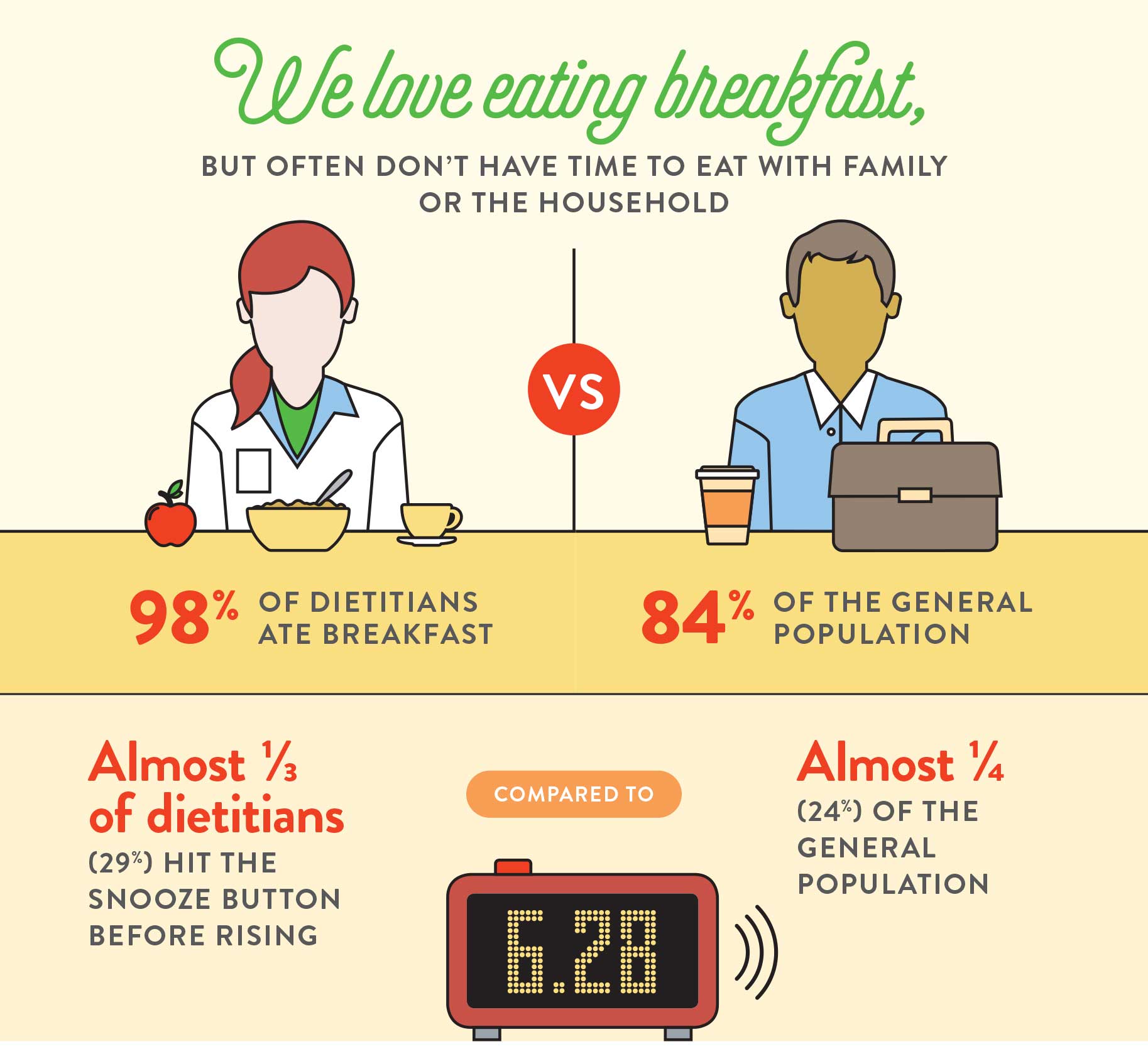
If you have a product or service that requires a touch of explanation, an infographic can demonstrate how simple and easy your process is. The infographic can show the sequence of events, but remember it’s not a flowchart. This only works if the process is truly simple. An overly complex process presented in an infographic may give the exact opposite impression.
Example – These infographics show the processes that produce hot and cold-pressed coffee.
The key to infographic success is knowing when not to use them. If you have an excessive amount of information, you might find your infographic is better suited to a flowchart or a table. The best infographics are simple and use plenty of visuals and white space. Cramming in details makes them unreadable and loses impact.
When infographics are used as a marketing tool, they may be unsuitable for sensitive or serious subjects. The audience might find the use of an infographic too casual, fun, or inappropriate. Sometimes, beautifying your data makes it less trustworthy.
Using them for intangible and abstract themes is often unworkable. An infographic about dogs and exercise has obvious imagery. But an infographic about thought leadership, value-adds or diagnosis methods might be difficult to translate.
• it appeals to your target audience
• it is well referenced with plenty of footnotes
• is simple, without excessive data
• uses plenty of visuals and white space
• has an even balance of information and visuals (50% info, 50% graphics)
• readable with the smallest and largest font size being legible at different size presentations
• has a strong headline that encourages the audience to read more
Example – The beneficial impact of pet ownership is a perfect subject for this infographic. It’s easy to utilise pet-related graphic elements alongside the text explanations.
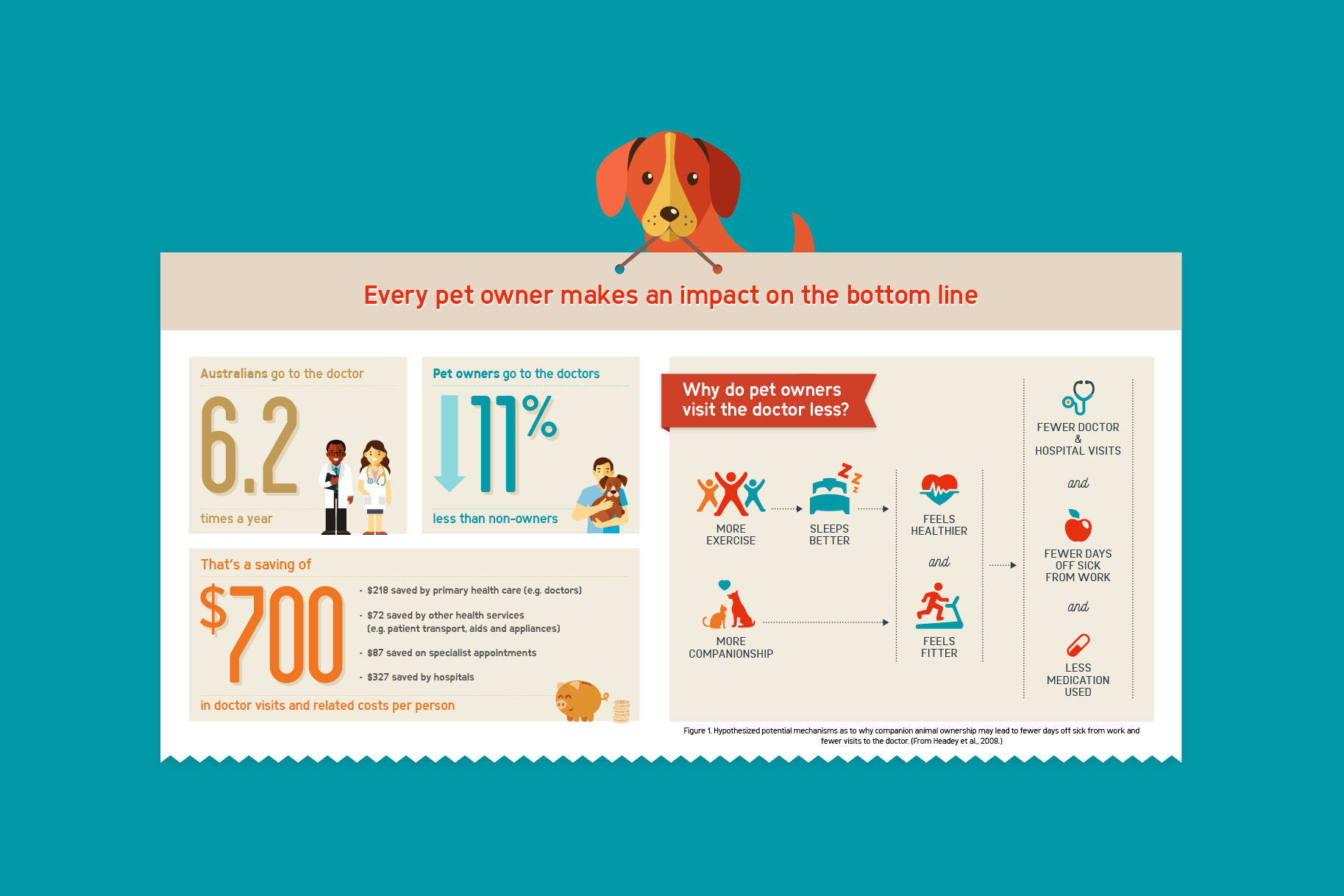
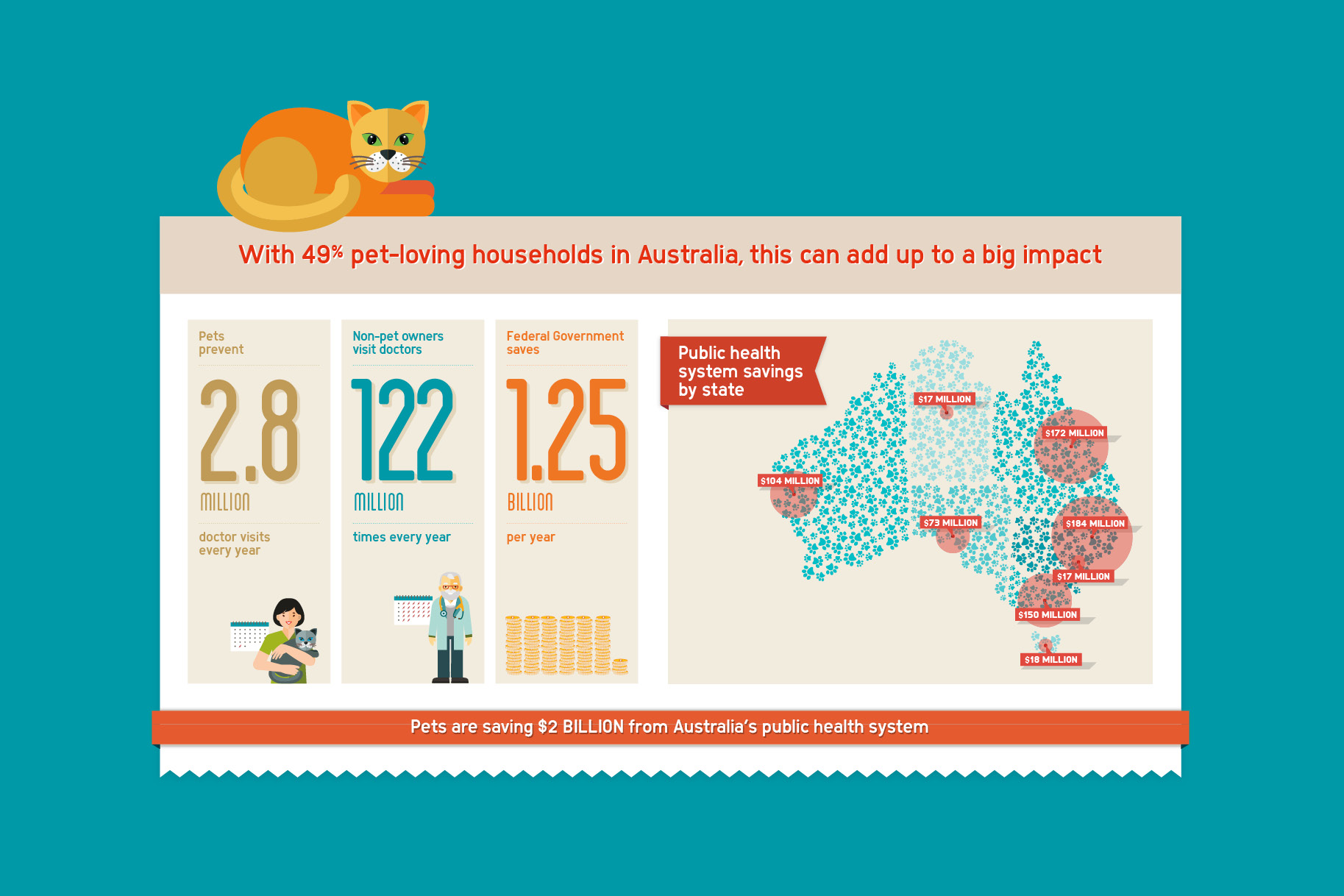

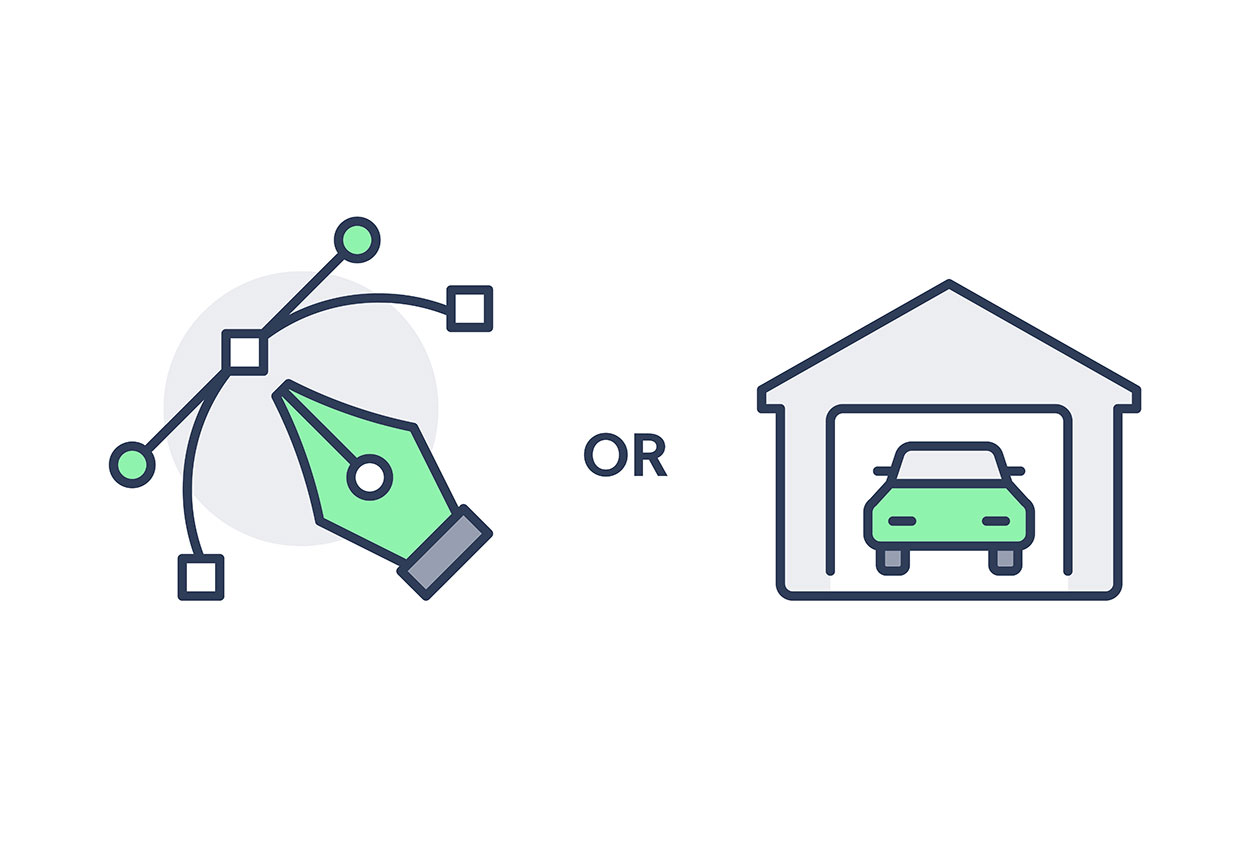
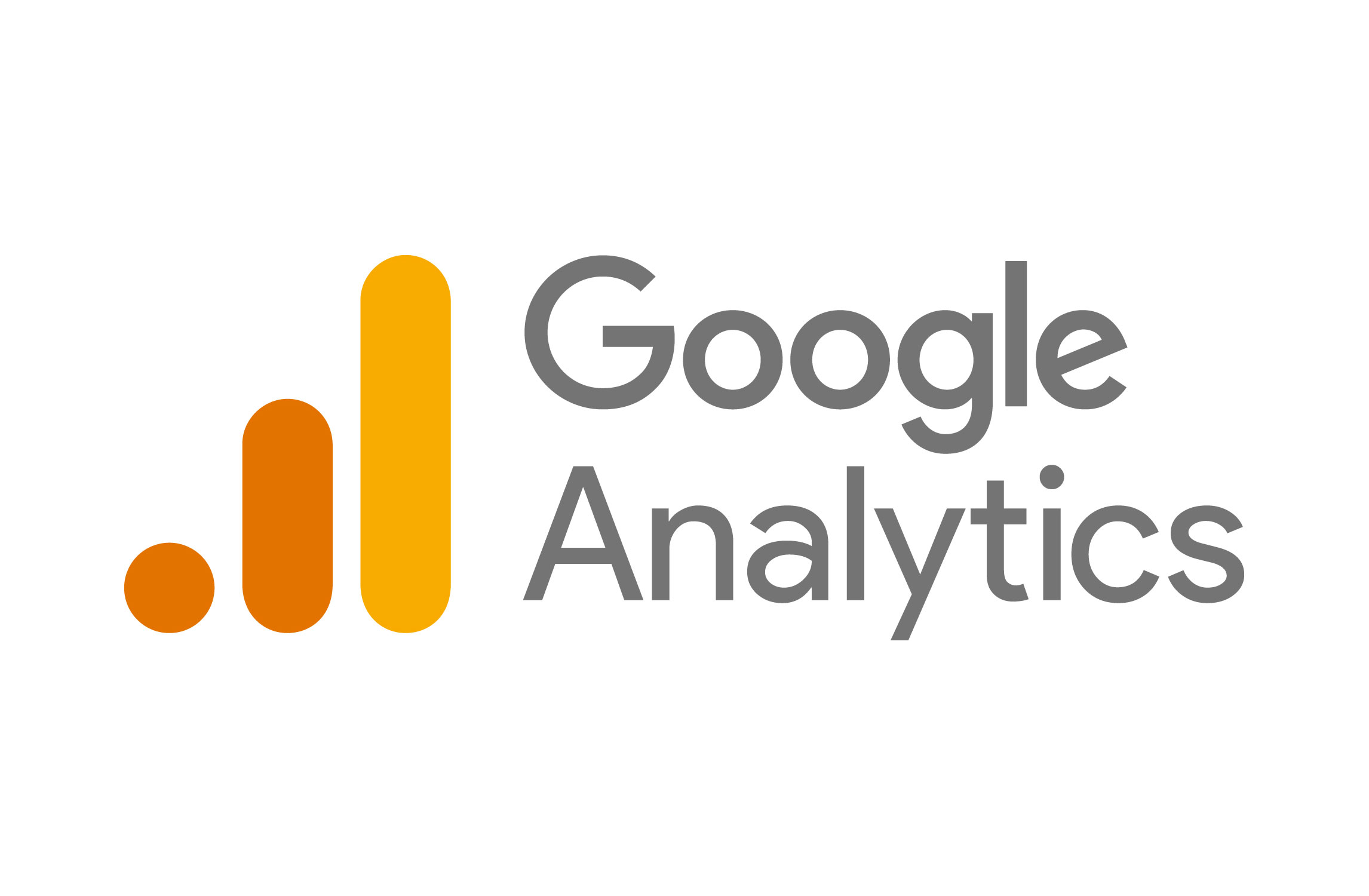
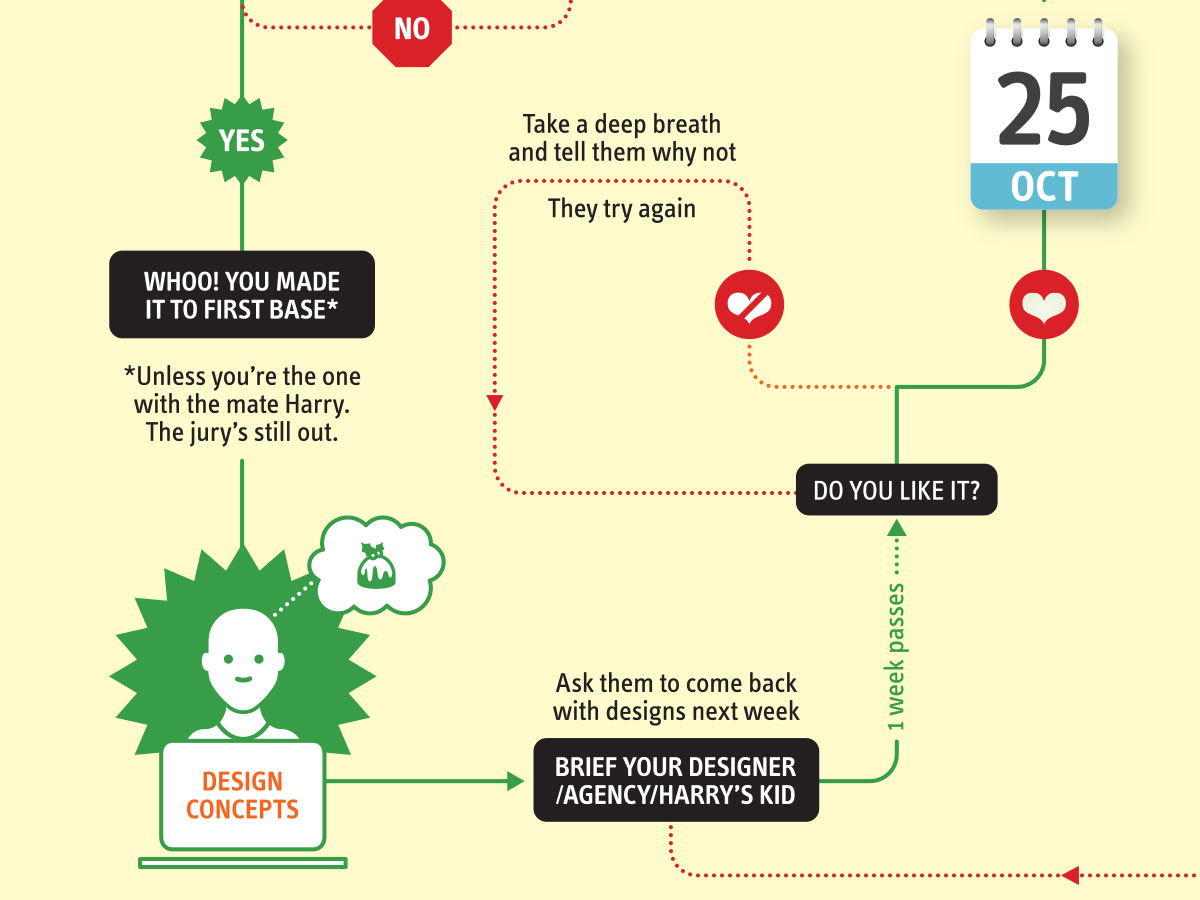
It’s that time of year when we start looking forward to the end of the working year, changes in the seasons, and celebrations over the New year…
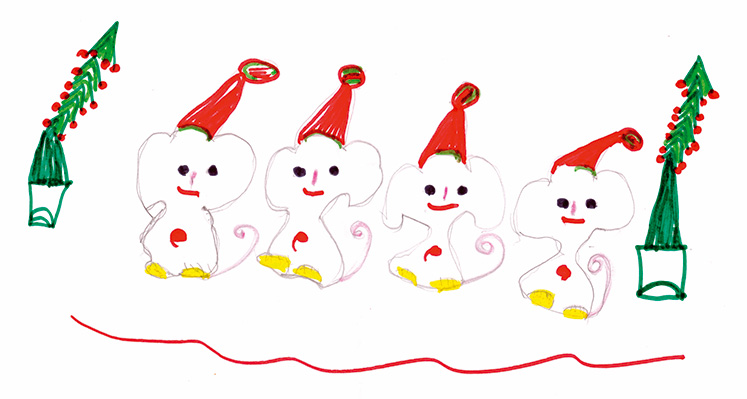
Sometimes it can be hard to think of Christmas Cards (especially when the holiday season is months away). So we present a few ideas to get your creative minds sparking…

For the 2024 President’s Dinner event at State Library Victoria, we created two visual concepts.
This is the concept that didn’t make the cut, and we share some of the additional printing and finishing details.

We have 3 rules when designing merch / swag / promotional gifts: 1. Sustainable
2. Usable
3. Quality

Whatever the brief is, it’s exactly the same. Every project. Every time. Every design. It‘s just one word.

You never know where inspiration comes from : behind-the-scenes at a design project combining the vintage aesthetic of pre-1800 Japanese rare books, with a modern twist.
Email hello@brandbyname.com.au
or call +61 3 8658 7744
105 Wellington St,
St Kilda VIC 3182
© 2025 Brand by Name™

Subscribe to our monthly newsletter — Brand News — filled with Design tips, Creativity hacks, Brand news and Design-related goodness.